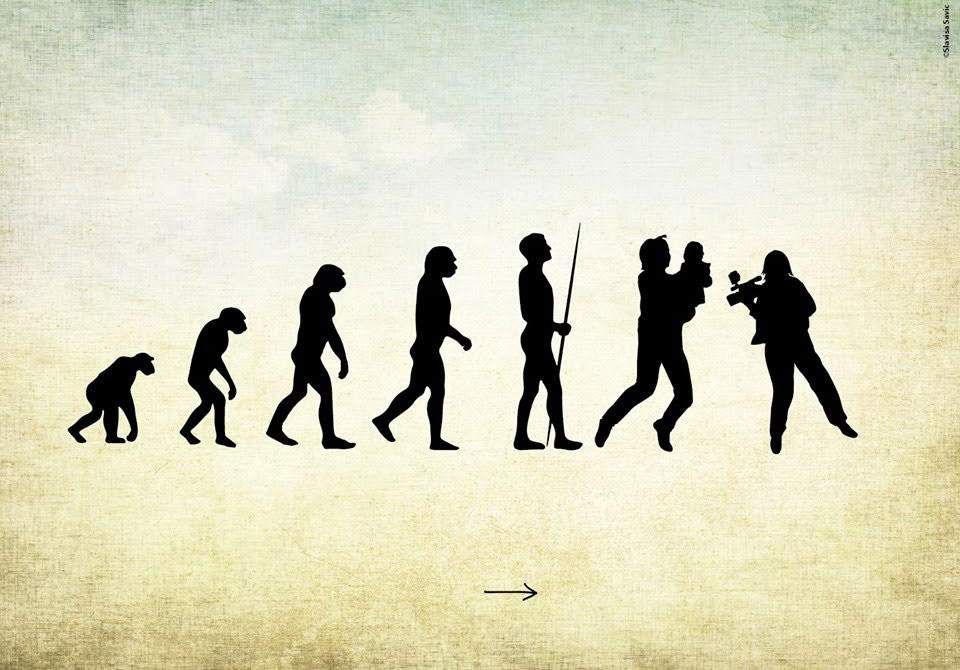The photograph of a Serbian police officer holding a Syrian boy went viral. The policeman is very gentle and the boy is calm and happy in his arms – definitely a pleasant picture in a sea of negative emotions caused by daily reports on the world’s misfortunes. The public in Serbia was happy about this positive media treatment of Serbia, since it so rarely produces images of reason, humanity and empathy.
Serbian media are full of praise for the Serbian police officer, Serbian police and the treatment of refugees in our country. This is the first of several rather insidious imputations – refugees’ statements about Serbian government “not treating them like animals” are not such a praise of Serbia as they might seem. They speak more about the treatment of refugees in other countries: they are beaten by the police and the army; abused, deported, starved and tattooed by the governments of other states. Compared to this treatment, laying on the grass of Serbian parks really seems like heaven on earth. Still, despite all these pats on the back, we should be honest and admit that while the refugees aren’t being (systematically) physically abused in Serbia, what support they receive comes from ad hoc organized citizens. We shouldn’t forget the fact that these people are sleeping in the streets of the capital and that the government has been supposedly searching for the right location for a refugee center for three months.
If we put things that way, the photograph of Serbian police officers becomes what it should be – an image on one human being sympathizing with another human being in trouble. We shouldn’t be surprised that so many people welcomed this image – it is encouraging because it reminds us that there are still people among us capable of sympathy and love for another. However, it shouldn’t be mistaken for Serbian police and government, which are trying to take advantage of an action of their employee (Minister Stefanovic immediately met with the police officer). It is the same police whose employees robbed refugees in the center of Belgrade and the same state whose mayor of the capital city said that the refugees in Belgrade are not a problem of Belgrade authorities, but should be dealt with by the relevant ministry. It is the same government which has been doing nothing to shelter the refugees and take them off the streets of Belgrade for months. So, that state and that police aren’t able to systematically and by organized effort guarantee what we saw in the popular photograph. If this is so, then that photograph certainly doesn’t represent Serbian police and the state, but an individual and praiseworthy act which belongs only to the person who did it.
There is another important twist in the story of the police officer and the Syrian boy: after the photographs were published, we found out that the police officer has an Albanian name, i.e. that he is a Serbian citizen and Serbian police officer, but an ethnic Albanian who doesn’t even speak Serbian. As soon as that came out, media reports started calling him “a police officer” instead of “Serbian police officer”. This proves the strength of the narrative which says that only an ethnic Serb is a Serbian citizen – everyone else are second-class citizens or, as prescribed by the Constitution – “others”.
In everyday Serbia, an ethnic Albanian couldn’t be the center of attention for being a good man and a good police officer. It can only happen by a tangle of life circumstances which include international journalists, internet and social media. In our everyday lives, Albanians are only mentioned in the context used by Ivica Dacic saying that he is “warning the Albanians not to play with fire” by making a parallel to the Association of Serbian municipalities in Kosovo. In our everyday lives, children are taught that Albanians are a threat and enemies of the Serbian people (which we have already written about). In that everyday life, Albanians are the “others” we are allowed to abuse. Ironically, we are allowed to treat them in a manner we praise ourselves for not treating the refugees – like animals. The state is still silent about the crimes committed against Albanians during the nineties, considers them acceptable and protects their perpetrators. The state is silent about the omnipresent discrimination against our fellow citizens, ethnic Albanians. That is why the case of Redjep Arifi is a complete coincidence, a sudden strike against the controlled reality that the Serbian public, media and citizens live in. Quite suddenly, we found out that Albanians, just like Syrian refugees, are – people.
Translated by Marijana Simic
Peščanik.net, 14.09.2015.
- Biografija
- Latest Posts
Latest posts by Sofija Mandić (see all)
- Dogovor koga nema - 19/04/2024
- Dačić’s referendum - 18/04/2024
- Dačićev referendum - 09/04/2024



